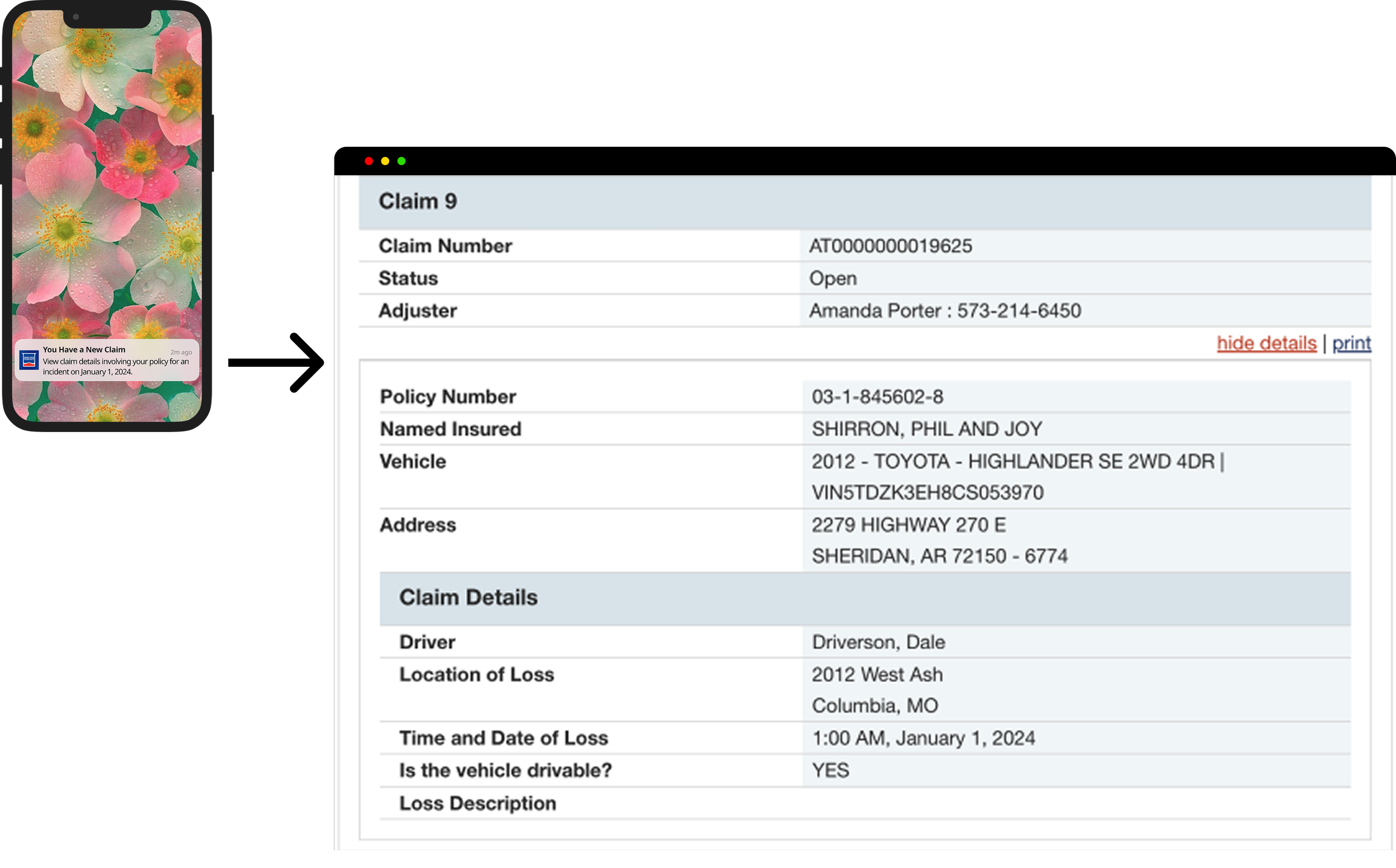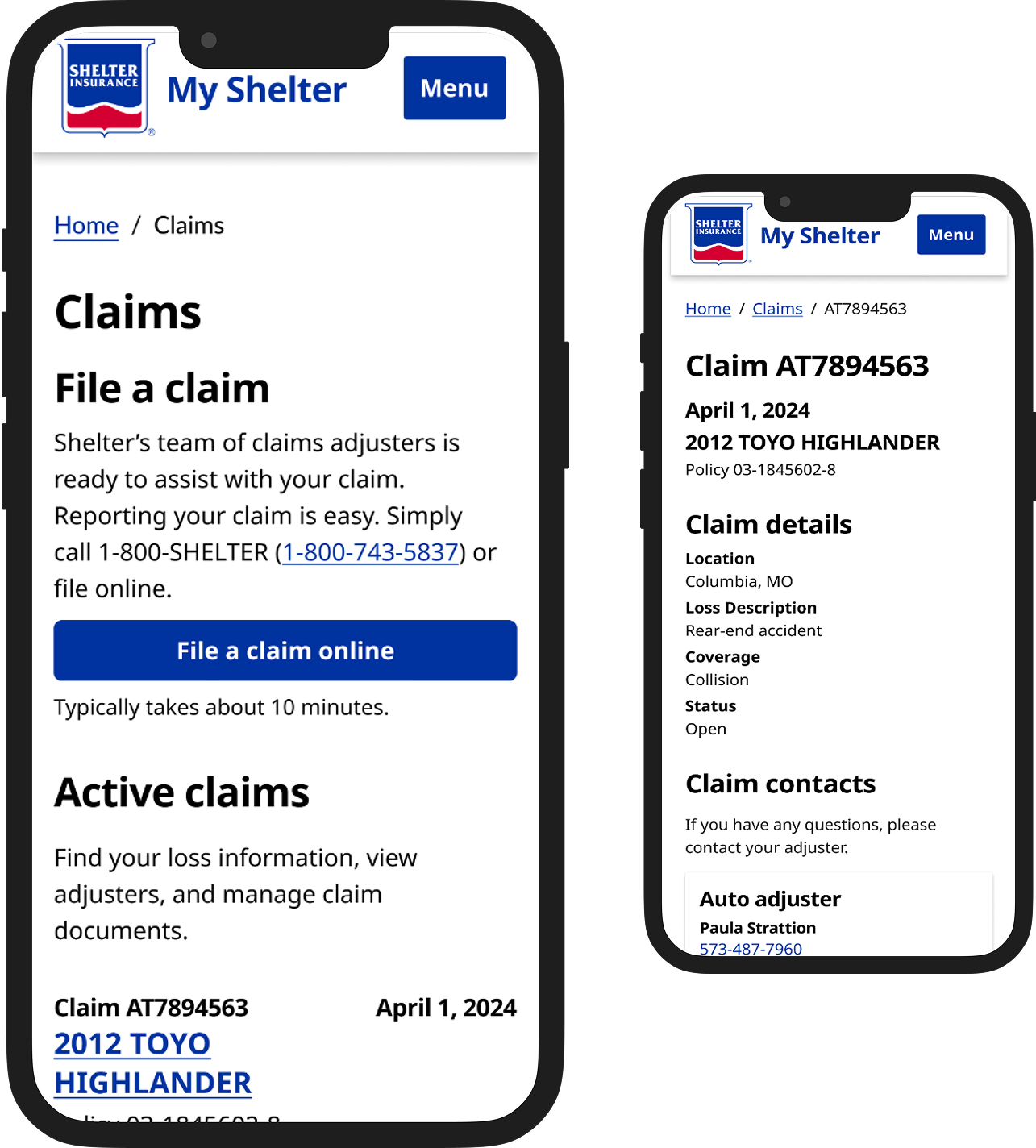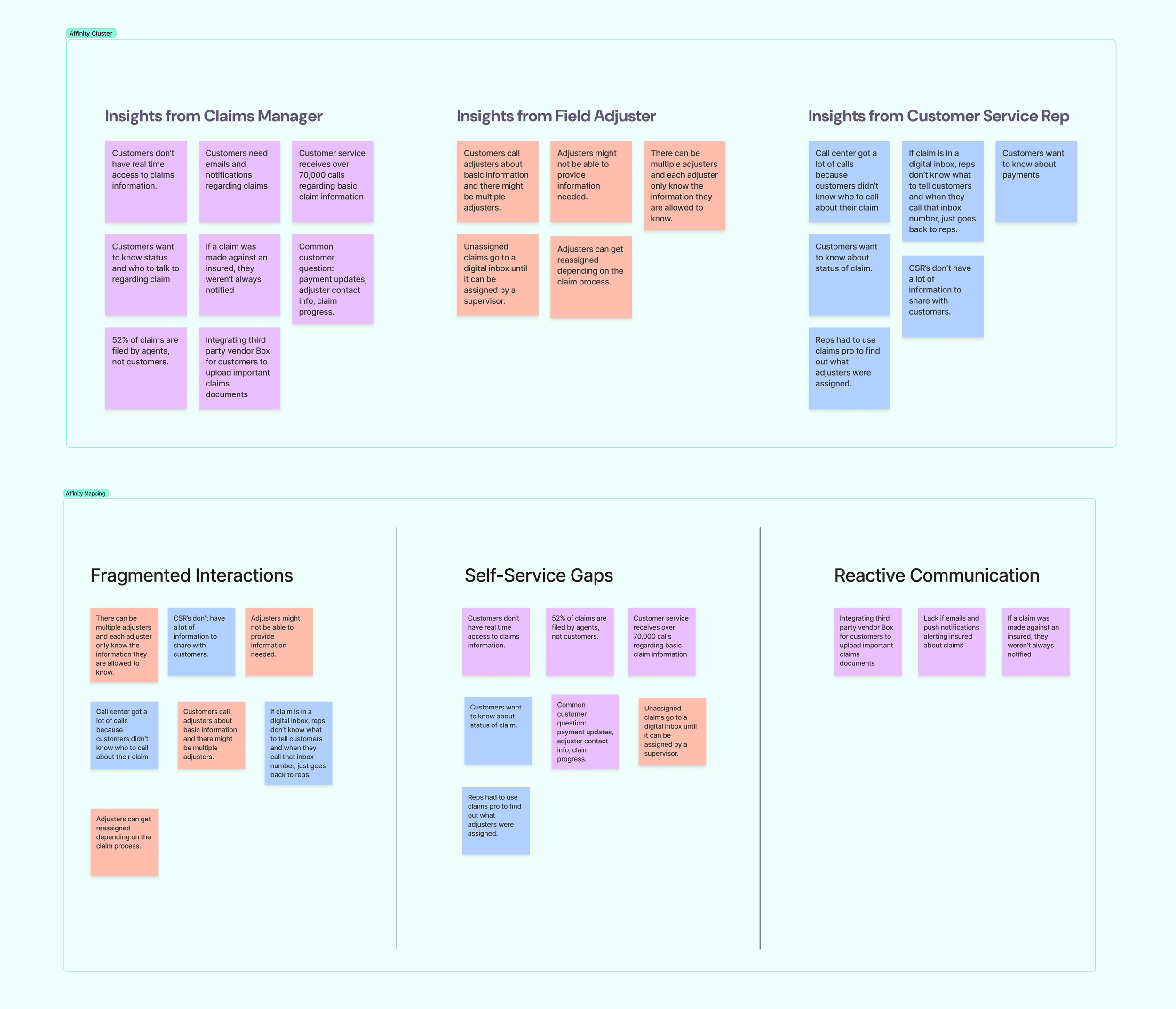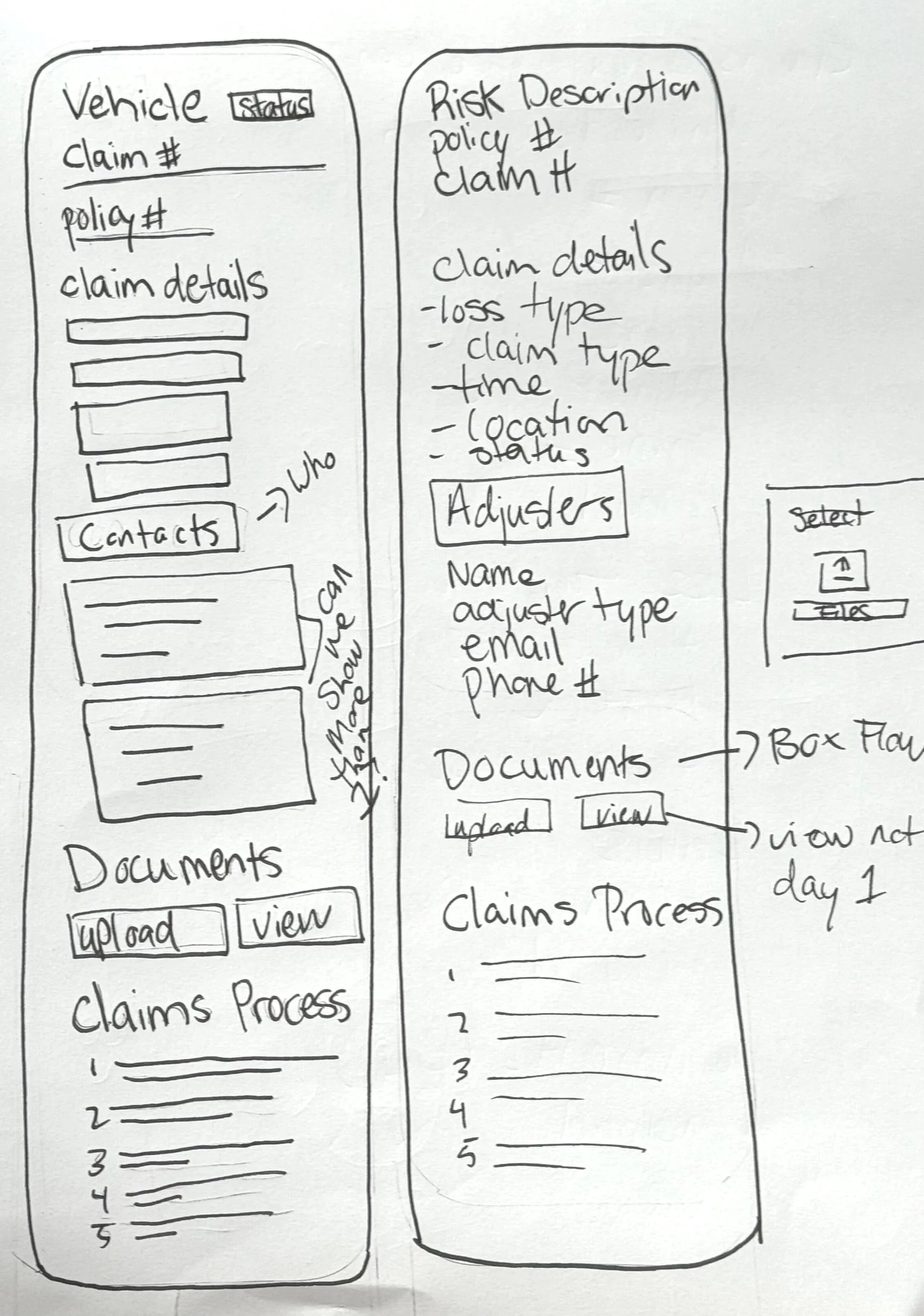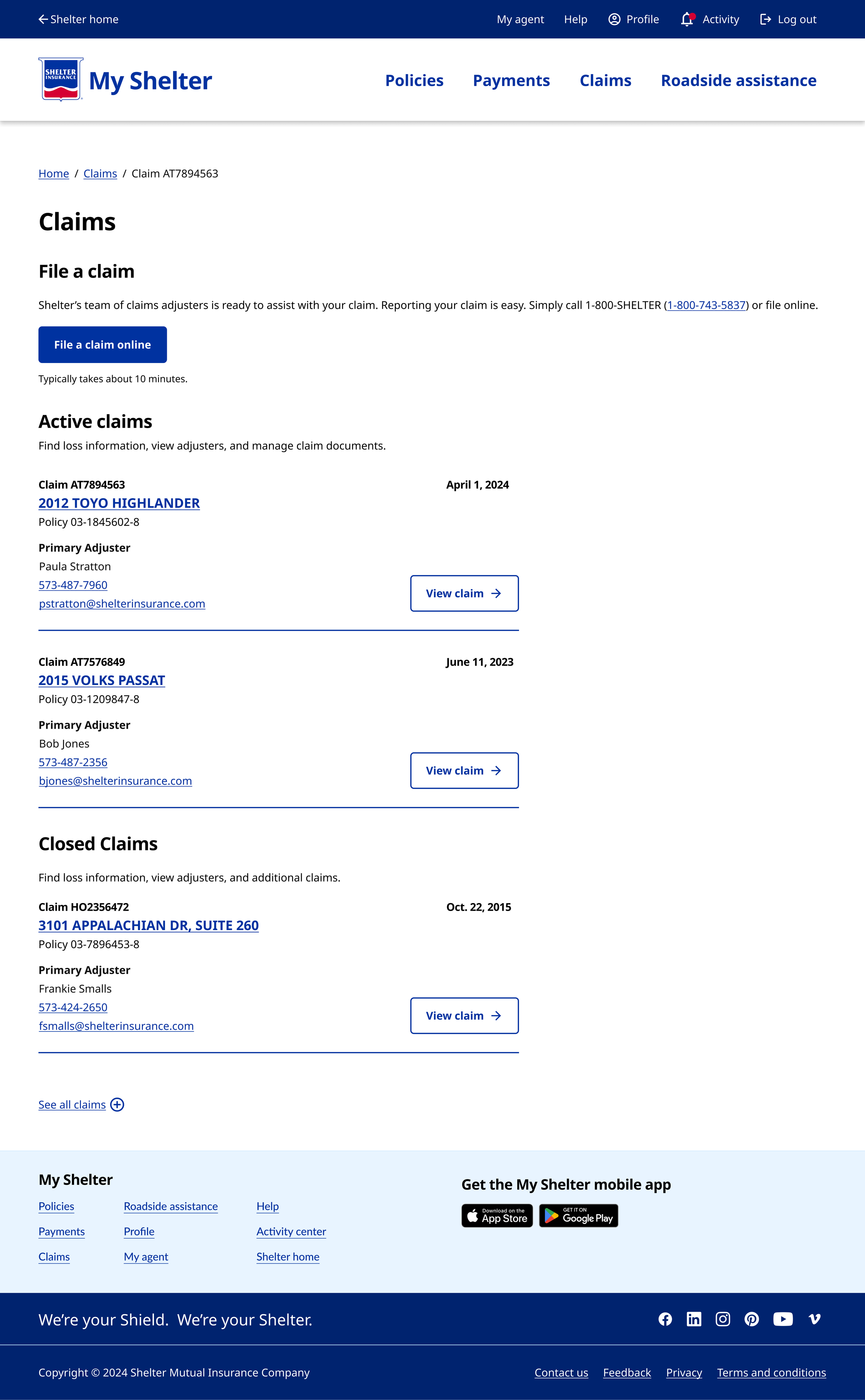Designing a Self-Service Claims Dashboard That Cut Support Calls by 10%.
Project Goals: Reduce calls to customer service call centers by 10% by creating policy lists, policy inquiries, and claims viewport features in customer portals.
Collaborated with: Customer Service, Claims Managers, Marketing teams, and Software development teams.
Deliverables: Claims landing page, Claims viewport page, notifications user flows, wireframes, and prototypes
The customer support and claims teams approached the design team because the claims information was difficult to find and navigate within the website for customers.
The customer support and claims teams approached our design team with a unique problem: claims information was hard to find and navigate within the website for customers. How might we solve this?
The current state of the website revealed that there wasn't a dedicated claims landing page or claims inquiry page.
Customers struggled to locate their claims information, which was hidden at the bottom of the policy inquiry page inside a collapsed tab that wasn't immediately visible.
Customers did not fully understand the status of their claim or where to upload supporting documents for that claim.
Customers did not understand how many adjusters were working on the claim or who the adjusters were.
The design team created a dedicated claims inquiry page showcasing all relevant details about a claim to customers.
The design team redesigned the navigation to connect each claim directly to its own dedicated inquiry page, providing customers with immediate access to everything they need in one place.
Each claims page now includes: the customer's claim numbers, risk descriptions, policy numbers, claims process information, claims adjusters' details and contact information, and document upload functionality.
Three major challenges shaped our design approach: the site's broken information architecture made content hard to find, existing content confused rather than helped customers, and we needed to integrate external technology for document uploads.
Our solution approach:
Created comprehensive UX workflows to restructure how users navigate and find information.
Conducted a full content audit and rewrote all claims-related copy to be clearer and more actionable.
Partnered with the claims team to map out seamless workflows that incorporated vendor touch points at the right moments.
Deliverables from this project included:
Affinity clustering from 6-8 stakeholder interviews with claims adjusters, claims management, and customer service.
UX workflows improving the information architecture (IA)
UX wireframes organized content into clear, logical buckets that made information easier to find and navigate.
Stakeholder interviews across claims adjusters, claims management, and customer service revealed the following themes:
What we learned:
Customers relied on phone calls to agents and call centers for basic claim information that should be easily accessible online
High call volume around claims inquiries was overwhelming the call center team
Customers lacked access to real-time updates about claim status and adjuster changes
Quotes:
In 2022, about 25% of calls that the call center received were regarding claim inquiries, which equated to over 70,000 calls. - Claims Manager
Designing Clarity: My Wire Framing Process for Claims
Define User Tasks and Flows
I began by identifying key customer tasks—like filing a claim or uploading documents—and mapping out the journey to ensure each step is intuitive and accessible.
Sketch Low-Fidelity Concepts
I created quick wireframes to visualize layout, hierarchy, and interaction patterns. These sketches prioritize usability and content clarity, particularly for mobile-first experiences.
Iteration
I refined wireframes based on feedback from product owners, developers, and accessibility reviewers, ensuring the design aligns with business goals and user needs.
Before: a claims history section in the policy details page
After: a dedicated claims landing page
Before: a claims summary on the policy details page.
After: a dedicated claims details page for each claim.
Impact metrics
Claims-related calls dropped from 25% to 15% of total customer service volume.
Customers have easier access to all of their claim information once logged into their accounts.
Clear communication around the claims process created visibility and trust with our users.
